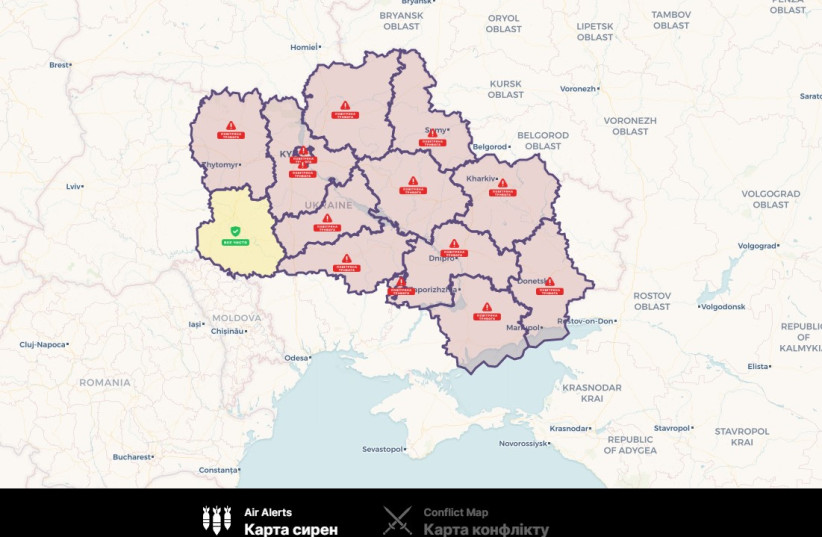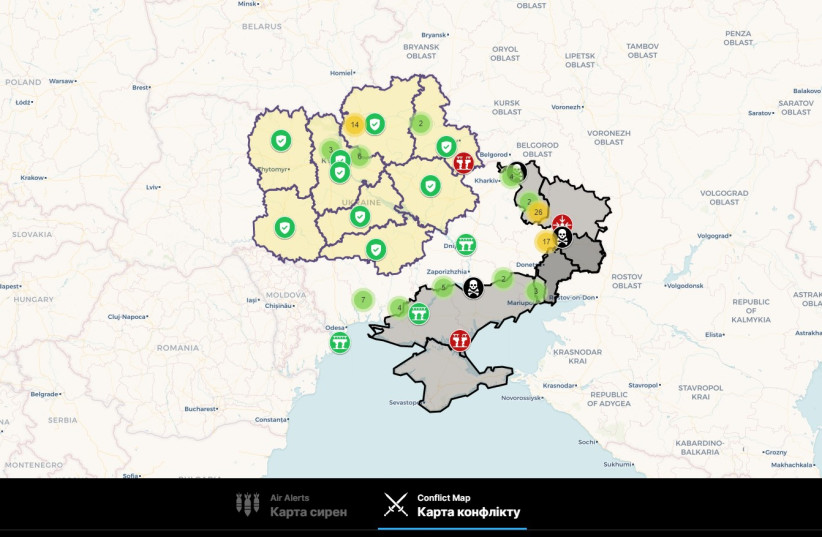Ukrainians wanting to keep track of air raid siren alerts, maps of ongoing battles and damaged infrastructure, and searching for shelters and Wi-Fi will soon have a new website and alert system to use to stay safe and informed amid Russia's ongoing invasion of the country.
The site, which will be available both in English and Ukrainian thanks to a partnership with CLEAR Global, is an extension of the Ukraine Siren Alerts project or UASA, inspired by Israel's Red Alert warning system, which has been operating on Twitter, Facebook and Telegram since March.
"Since the beginning of this project, I have been making it my goal to help people stay safe and be informed."
Bernard Moerdler, UASA founder
<br>Ukraine Siren Alert project
UASA's Twitter account currently has nearly 10,000 followers and its Facebook account has over 2,200 followers. The project believes that number will only grow once the website launches on Wednesday.
The UASA project, founded by Bernard Moerdler, currently uses data taken directly from municipalities that broadcast alerts via Telegram or their own websites and then post these alerts on social media platforms.

That functionality will be expanded on the site, with a live-updating map of air raid alerts, with regions with ongoing alerts or new “all clear” notifications highlighted in yellow.
Users will also be able to subscribe to receive email or SMS alerts for specific regions.

The site also features a conflict map built in partnership with the Project Owl OSINT community, showing areas under Russian control, checkpoints, cities and towns under siege and where battles are ongoing, bridges that have been damaged or destroyed and the locations of minefields.
Users on the site will also be able to access a feed showing a list of air raid alerts and a feed showing news updates from trusted sources.
<br><br>More advanced warnings to help Ukrainians
Another issue those in Ukraine face during the Russian invasion is the lack of orderly information about shelters, as there is no unified map of shelters in the country. Instead, each municipality either has their own local map or just a spreadsheet.
The new UASA site takes data from those maps and spreadsheets and presents them on a single map, along with their address and a link to their location on Google Maps for easy navigation. The map also shows shelters that are equipped with radiation protection and features a search bar to make it easier to find a nearby shelter.
The new UASA site will also allow users to search for Wi-Fi hotspots, including their locations, network names and passwords through the “Wifi Map” service.

Moerdler stated that he was first inspired to start the UASA project because of his girlfriend, who is from Ukraine. While the two were discussing her family's situation in Ukraine, they realized that there is no efficient and accessible way to alert people both inside and outside of the country regarding air raid sirens being activated there.
The current system being used in Ukraine is area-specific and location-locked, meaning people who have family members in Ukraine or who live there and have loved ones who live in other areas of the country will not be able to see if a siren is sounding, but will instead have to wait for mainstream media to report on it. There is a Ukrainian mobile app available for siren alerts, but it is currently only available in Ukrainian.
<br>An Israeli inspiration
In Israel, rocket and air raid alerts show up publicly both on official and unofficial apps and channels, including alerts that pop up on TV and multiple mobile applications, meaning that anyone can see where alerts are being activated the moment they happen. Moerdler took inspiration from this system and decided to build a similar one for Ukraine.
"Since the beginning of this project, I have been making it my goal to help people stay safe and be informed," Moerdler told The Jerusalem Post. "This new site will contribute to this goal by providing up-to-date news, shelter locations all over Ukraine, as well as information about Russian troops and danger zones."
"With the new platform, there are also new challenges," added the project leader, pointing to the funding of the project as a major concern. "The project has always been donation-based and so far many have generously donated to help keep it active. As we introduce more and more things, costs rise, so I am looking for other methods to help cover those costs."
Moerdler invited those looking to support the initiative to contact the UASA project, as adding features such as SMS alerts has significantly raised the costs of the project.
The site will be accessible at https://uasa.io/ once it launches.
